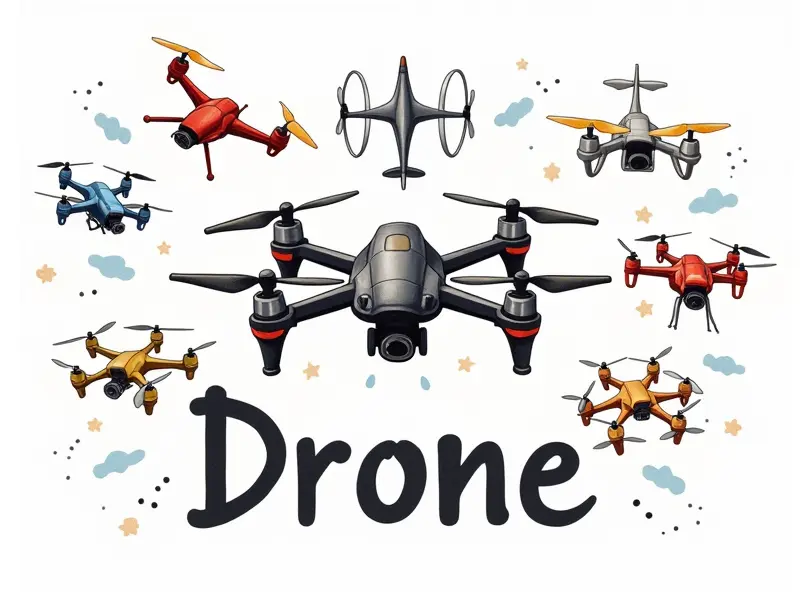Do drones have thermal cameras?

Exploring Thermal Camera Capabilities in Drones
Drones equipped with thermal cameras are becoming increasingly popular due to their unique capabilities. These devices can detect temperature variations, making them invaluable for a wide range of applications, from search and rescue operations to industrial inspections.
The integration of thermal imaging technology into drones has revolutionized how these aerial vehicles operate. By combining the mobility of drones with the precision of thermal cameras, users can capture detailed heat signatures in real-time. This feature is particularly useful in low-light conditions or during nighttime missions where traditional visual sensors fall short.
Are Thermal Cameras Practical for RC Drones?
The practicality of integrating thermal cameras into remote-controlled (RC) drones depends largely on the intended use case and operational environment. While RC drones are often smaller and less sophisticated than their commercial counterparts, advancements in technology have made it possible to equip even these devices with high-quality thermal imaging capabilities.
For example, hobbyists can benefit from thermal cameras by detecting wildlife or conducting surveillance during night-time activities. However, the size and weight of thermal sensors must be carefully considered when selecting an RC drone model that supports this feature.
Integrating Thermal Imaging with Drones
The process of integrating thermal imaging technology into drones involves several key steps:
- Selecting the Right Drone Model: Opt for a drone that is capable of carrying additional payload, such as a thermal camera.
- Choosing High-Quality Thermal Sensors: Ensure the thermal sensor has high resolution and sensitivity to capture accurate temperature data.
- Mounting the Camera Properly: Secure the thermal camera to the drone's frame using appropriate mounting brackets or harnesses.
- Calibrating the Thermal Imaging System: Perform initial calibration to ensure that the thermal images are accurate and reliable.
Thermal Cameras: A Drone Feature Overview
Drones with built-in thermal cameras offer a range of features designed to enhance their functionality:
- Real-Time Temperature Data: Continuous monitoring of temperature variations in the environment.
- Night Vision Capabilities: Effective operation even in low-light conditions, enhancing visibility and detection.
- Heat Signature Detection: Ability to identify objects based on their heat signatures, making them ideal for search and rescue missions.
How Effective are Thermal Cameras on Drones?
The effectiveness of thermal cameras on drones is highly dependent on the application. In scenarios such as firefighting, where identifying hotspots in buildings or wildfires is crucial, thermal imaging proves invaluable. Similarly, in industrial settings, these cameras can detect overheating machinery and electrical faults before they become critical issues.
The Role of Thermal Cameras in Modern Drones
Thermal cameras play a pivotal role in modern drone technology by expanding their operational scope beyond visual inspection to include temperature analysis. This advancement has led to the development of specialized drones for agriculture, construction, and security sectors, where thermal imaging can provide critical insights.
Benefits of Using Thermal Cameras on Drones
The benefits of using thermal cameras on drones are numerous:
- Safety Enhancement: Detecting potential hazards early through temperature analysis reduces risks in dangerous environments.
- Efficiency Improvement: Quick identification and resolution of issues, such as electrical faults or structural weaknesses, saves time and resources.
- Data Accuracy: Reliable collection of thermal data provides accurate insights for decision-making processes.
Do RC Quadcopters Have Thermal Cameras?
Many modern RC quadcopters are designed to accommodate thermal cameras, although the availability and quality may vary. Some high-end models come pre-installed with thermal imaging capabilities, while others offer mounting options for external sensors.
The integration of thermal cameras into quadcopters enhances their utility in various applications, from wildlife monitoring to industrial inspections. However, users must ensure that the chosen model can support the additional weight and power requirements of a thermal camera.
Are Thermal Cameras Available for RC Planes?
Thermal cameras are indeed available for RC planes, though their integration requires careful consideration due to the aerodynamic constraints and payload limitations inherent in these aircraft. For hobbyists interested in adding thermal imaging capabilities to their RC planes, it is essential to choose lightweight sensors that do not compromise flight performance.
Integrating Thermal Sensors into Drones
The process of integrating thermal sensors into drones involves several technical aspects:
- Compatibility Checks: Ensure the drone’s frame and power system can support the additional weight and power consumption of a thermal sensor.
- Data Transmission: Implement reliable data transmission protocols to ensure real-time image streaming from the thermal camera to ground control software.
- User Interface Customization: Customize the user interface for seamless operation, allowing pilots to switch between visual and thermal views effortlessly.
Why Use a Thermal Camera on an RC Drone?
The use of a thermal camera on an RC drone offers several advantages:
- Enhanced Night-Time Operations: Improve visibility in low-light conditions, enabling continuous monitoring and surveillance.
- Wildlife Observation: Capture detailed images of animals that are difficult to spot using traditional cameras, especially during nighttime.
- Maintenance Checks: Identify potential issues in electrical systems or mechanical parts through temperature analysis before they cause failures.
Conclusion
The integration of thermal cameras into drones has opened up new possibilities for both professional and recreational users. Whether it is for enhancing safety, improving efficiency, or providing accurate data, the benefits are clear. As technology continues to advance, we can expect even more sophisticated features in drone thermal imaging systems.

